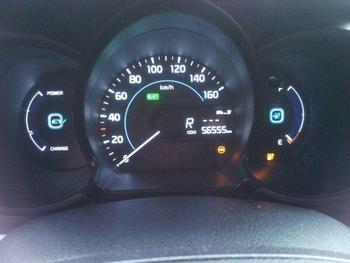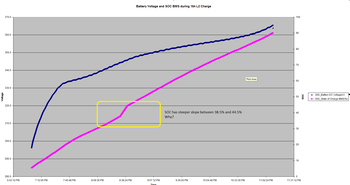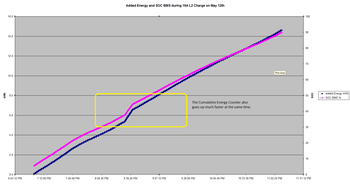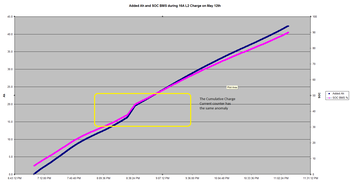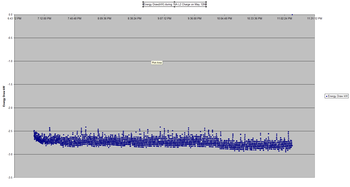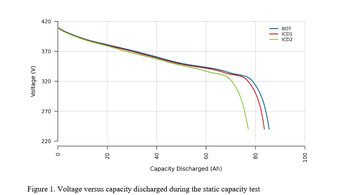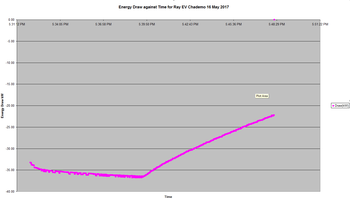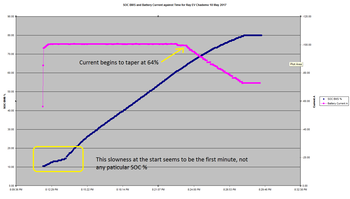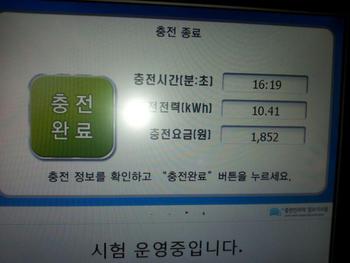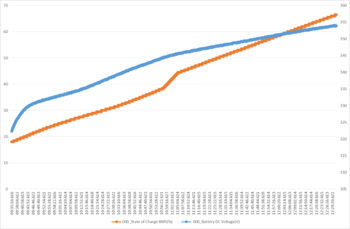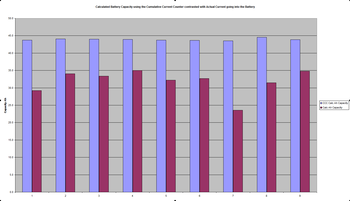-
I am currently driving a 2012 Kia Ray EV with about 56,000km on the odometer.
Here are some photos taken on a recent range test.
I am using the same torque codes to read the BMS as we use on the Soul EV.
I charged to 100%, drove 100km until the battery was below 10% and then recharged to 100%.
The Ray EV does not display SOC, nor is there a reading in the BMS for SOC (display).
At 100% charge SOC (BMS) displayed 90%. At the end SOC (BMS) displayed 9.5%.
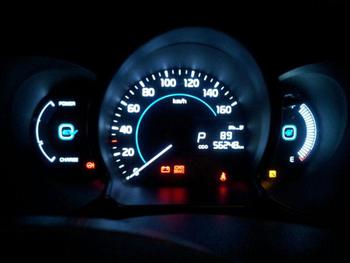
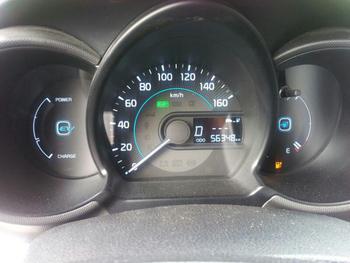
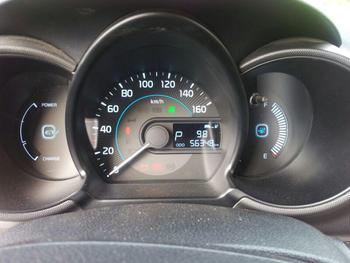
At each of these points I took a screenshot of the BMS data.
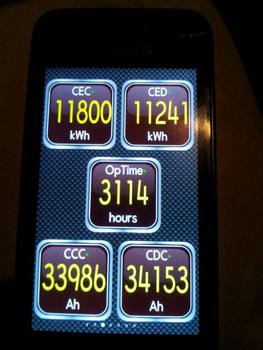


Energy charged = 14 kWh for 90% (roughly) => Full pack 24.5/0.9 = 15.5kWh
Energy discharged = 14 kWh for 90% (roughly) => Full pack 14/0.9 = 15.5kWh
Regenerated Energy on the trip was 5kWh.
Ah charged = 40 Ah for 90% (roughly) => Full pack 40/0.9 = 44.4Ah
Ah discharged = 41 Ah for 90% (roughly) => Full pack 41/0.9 = 45.5Ah
Regenerated Ah on the trip was 16Ah.
These numbers at first seemed reasonable but then I checked with this.

From the external stand in 4 hours of charging I loaded 13.7kWh. There is no way I could have got 14kWh into the battery.
I was loading 16A at just under 220V. The input power was just under 3.5kW. The external c harger is correct.
The energy draw on the battery was between 2.6kW and 3.0kW depending whether the EWP was on or not. Assuming an average of 2.8kW the efficiency of the process is about 80%. I was watching this data on the screen, but didn't take a screen shot. I have the logs so will be able to get a more accurate value. Using this value suggests that in 4 hours I got 11.2kWh and thus the usable pack capacity is 12.4kWh
Update - from the logfile actual average energy draw was -2.83kW, so in 4 hours I would have charged 11.32kWh. Efficiency = 82.7%.
This reading would give a max battery capacity of about 12.6kWh.
Seems a more reasonable number given my Soul EV with 27kWh would drive 200k on a similar trip.
The main lesson here is that the Cumulative Energy Counters reported by the BMS are not to be trusted.
I am currently driving a 2012 Kia Ray EV with about 56,000km on the odometer.
Here are some photos taken on a recent range test.
I am using the same torque codes to read the BMS as we use on the Soul EV.
I charged to 100%, drove 100km until the battery was below 10% and then recharged to 100%.
The Ray EV does not display SOC, nor is there a reading in the BMS for SOC (display).
At 100% charge SOC (BMS) displayed 90%. At the end SOC (BMS) displayed 9.5%.



At each of these points I took a screenshot of the BMS data.



Energy charged = 14 kWh for 90% (roughly) => Full pack 24.5/0.9 = 15.5kWh
Energy discharged = 14 kWh for 90% (roughly) => Full pack 14/0.9 = 15.5kWh
Regenerated Energy on the trip was 5kWh.
Ah charged = 40 Ah for 90% (roughly) => Full pack 40/0.9 = 44.4Ah
Ah discharged = 41 Ah for 90% (roughly) => Full pack 41/0.9 = 45.5Ah
Regenerated Ah on the trip was 16Ah.
These numbers at first seemed reasonable but then I checked with this.

From the external stand in 4 hours of charging I loaded 13.7kWh. There is no way I could have got 14kWh into the battery.
I was loading 16A at just under 220V. The input power was just under 3.5kW. The external c harger is correct.
The energy draw on the battery was between 2.6kW and 3.0kW depending whether the EWP was on or not. Assuming an average of 2.8kW the efficiency of the process is about 80%. I was watching this data on the screen, but didn't take a screen shot. I have the logs so will be able to get a more accurate value. Using this value suggests that in 4 hours I got 11.2kWh and thus the usable pack capacity is 12.4kWh
Update - from the logfile actual average energy draw was -2.83kW, so in 4 hours I would have charged 11.32kWh. Efficiency = 82.7%.
This reading would give a max battery capacity of about 12.6kWh.
Seems a more reasonable number given my Soul EV with 27kWh would drive 200k on a similar trip.
The main lesson here is that the Cumulative Energy Counters reported by the BMS are not to be trusted.




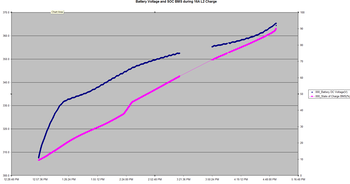
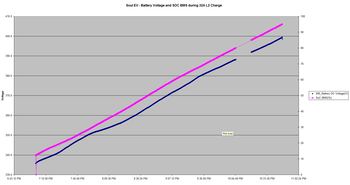
















![300W Car Power Inverter 12V to 110V,PiSFAU DC to AC Car Plug Adapter Outlet with Multi USB[24W USB-C] /USB-Fast Charger(24W) Car Inverter,Car Charger for Laptop Vehicles Road Trip Essentials](https://m.media-amazon.com/images/I/41-KedJShYL._SL500_.jpg)













